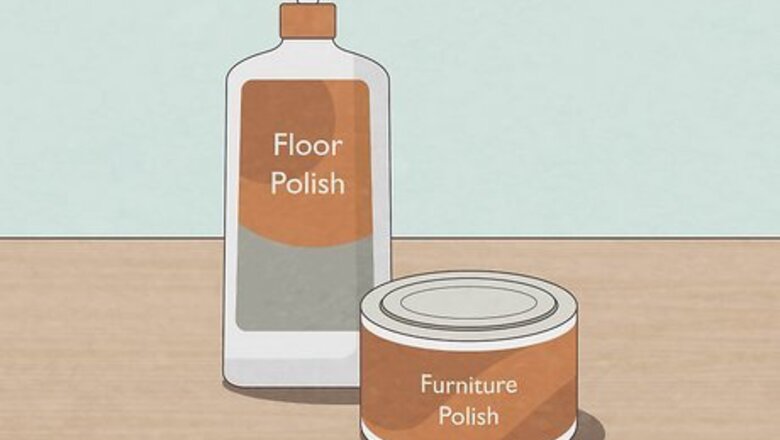
views
- Use a general wood floor or furniture polish. For a more specific look, you can polish wood with lacquer, linseed oil, varnish, or shellac.
- Apply polish to furniture using a microfiber cloth. Work in the direction of the grain and apply multiple layers as desired.
- For wood floors, use a flat-surface mop to spread the polish out in the direction of the floorboards.
Setup and Prep Work
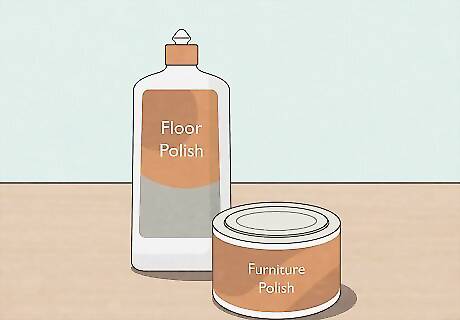
Choose the right wood polish for the job. If you are looking for a simple solution, pick up any general furniture or floor polish. These polishes will be versatile and easy to use, so if all you’re looking for is a nice shine then these will get the job done. If you are looking for something more advanced, look into using linseed, tung oil, shellac, varnishes, or lacquers. Be aware that varnishes, lacquers, and some mixtures of oils emit toxic fumes and will require extra safety precautions. You don't need to polish newer, modern wood if it already looks and feels finished. Most modern furniture and flooring come pre-polished and sealed. Only use wax over non-oil polishes, such as shellac or lacquer.

Open the windows and turn some fans on. Most polishes are non-toxic, but they can still be pretty pungent. If you’re polishing a piece of furniture with a product that emits strong fumes, it is safest to work outside. If you need to work inside or are polishing a hardwood floor, open all of the windows in the room or use fans to increase air circulation. Throw on a dust mask or respirator if you have to work in an area with no airflow.
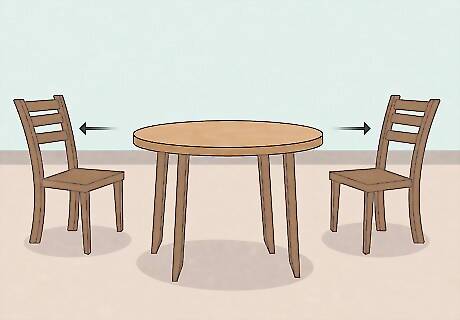
Clear the area of any obstacles. If you are polishing furniture, move other furniture, decorations, and plants away from the furniture you’re polishing. If you are working on carpet, put down a tarp to prevent staining in case you spill any polish. If you’re polishing floors, remove all of the furniture. Be sure to make sure any pets or kids cannot enter your work area as you polish, especially if you’re using a polish or solvent that emits fumes.
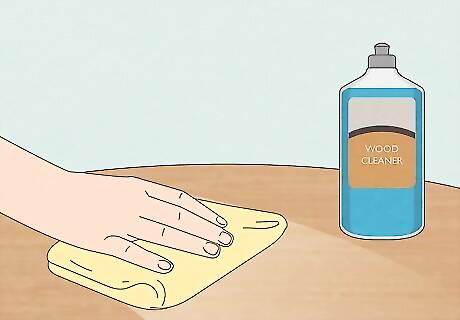
Clean the wood thoroughly before applying polish. Use either a professional-grade wood cleaner or a mixture of hot water and dish soap. Wipe down the furniture and floors with a cloth. For furniture, briskly wipe down the surface with a damp microfiber cloth before drying with a dry microfiber cloth. For floors, sweep the area with a broom or wood-safe vacuum and then mop. Air dry the wood for a few hours after drying it by hand just to ensure there’s no moisture in the wood. It's important to dry the wood a little by hand before letting it air dry since wet wood can warp or rot. You can also spray the entire area with a floor-cleaning solution before mopping if the floor is particularly dirty.
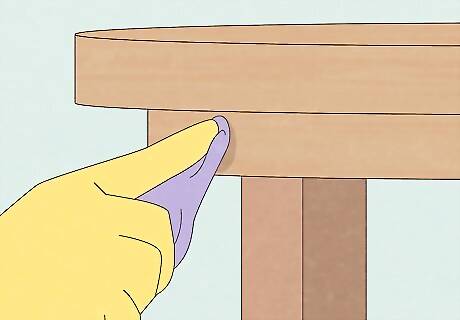
Test your polish on an inconspicuous spot. The polish may have unexpected effects on the wood, so test it out first. Work a touch of polish into the wood and let it dry. If you like the look, go ahead and finish polishing. If you don’t like it, you can choose a different polish. This is also a great way to see if any floors have a layer of laminate if you weren’t sure. Laminate will prevent the polish from sticking to the surface.
Furniture
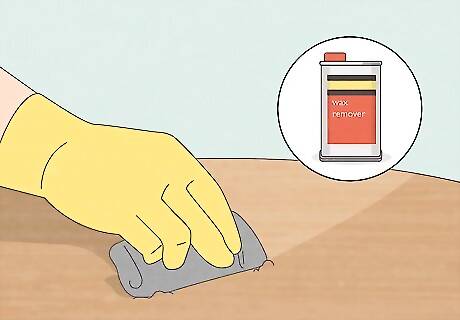
Remove any old wax (if there is any) using a wax remover. Dampen a dry microfiber cloth with a wax remover and wipe along the grain of the wood. Wait until it is completely dry to ensure that you won’t damage the wood, then wipe off any excess dirt or wax with a dry microfiber cloth. You can use 0000 steel wool to gently sand away any marks or stains. Test your wax remover on an inconspicuous area before covering the entire piece of furniture. If you don’t have any wax remover, use a 1-to-1 ratio of hot water and club soda.
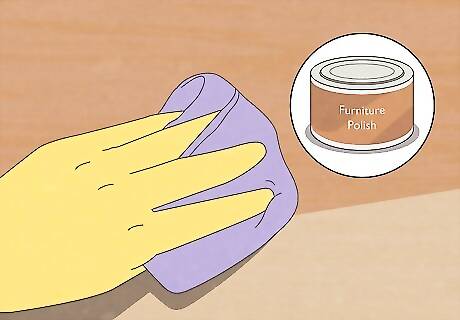
Apply thin layers of polish along the grain of the wood. Scoop up a dollop of wax with a dry microfiber cloth. This will allow the polish to absorb into the cloth without applying so much that it will begin pooling on the furniture. Rub the cloth along the grain of the wood to work in the polish. If you’re using a thinner polish that’s closer to a liquid, pour a little into your cloth instead of scooping it up. Make sure to get in all crevices and corners. Open cabinets or drawers to polish the joints and interior spaces.
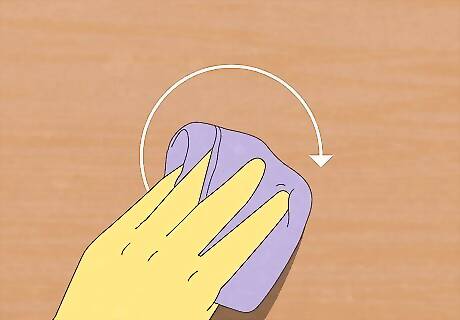
Continue adding layers of polish in new patterns (optional). After the first layer dries, your furniture should be glossy, but you can continue adding layers to achieve the finish you want. If you add additional layers, work in a new pattern. Go against the grain or use circular motions to build the polish up. Follow the polish’s guidelines when it comes to how long you wait between layers. Most polishes need around 4-8 hours of drying time.
Floors
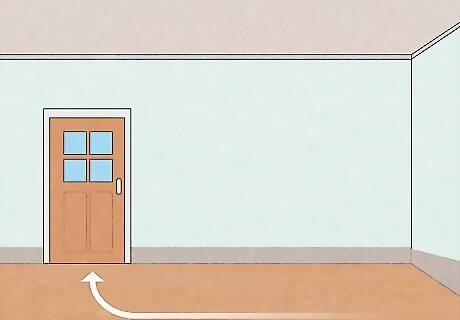
Plan the path you’ll walk and start away from the door. Without planning this out first, you could accidentally corner yourself far from a door and be forced to either walk over the wet polish or stay in place until it dries. It is best to begin in a back corner opposite a door and work across the floor in rows. Polish can stain baseboards and drywall, so be careful not to splash the walls. If you are concerned about this, place blue painter’s tape around the bottom of the baseboards as a protective measure.
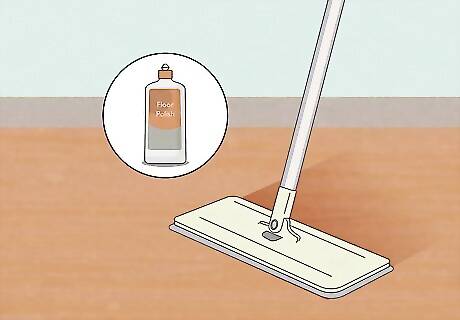
Rub the polish into the floor with a flat-surface mop. Pour a cupful of polish on the floor and begin working the polish into the wood with a back-and-forth motion. Work parallel to the grain of the wood. Slowly add polish as you feel like you’re running out. Aim for applying thin layers so that the polish dries quickly and evenly. Apply polish in the corners and edges with a natural-bristle brush. Continue applying the polish until you’ve completed the room or area you want to cover.
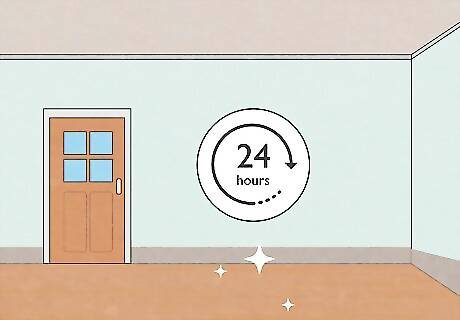
Wait 24 hours for the polish to dry after your last coat. Heavy furniture may scratch your freshly applied polish, so wait until the floors are completely dry before bringing any back in. If you would like a smoother finish, feel free to use a 100-grain sanding pole between layers. Clean the floors and wipe with a tack rag after sanding. Do not sand the final layer. This will dull the finish of the polish.
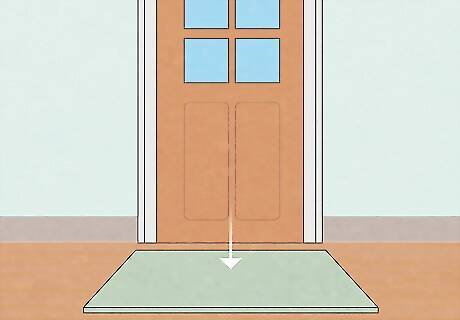
Protect your floor by placing rugs strategically. Place rugs at entryways to prevent tracking dirt, or ask guests and family to remove their shoes before entering the home. Place rugs near sinks to prevent water damage. Sweep and vacuum regularly to prevent scratches.




















Comments
0 comment